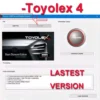No products in the cart.
Chip tuning and gas mileage explained Leave a comment
Today we are examining the effects of modifying your vehicle’s engine control unit (ECU) to increase performance and mysteries surrounding ECU modifications and their impact on fuel efficiency.
Odometer Reading on the Dashboard: What’s Really Going On?
You may have noticed a seemingly optimistic change in the odometer reading on your dashboard after you’ve adjusted your ECU. However, caution is advised here. Even if the figures paint a rosier picture, they don’t necessarily reflect a reduction in fuel consumption. It’s like looking at the world through rose-tinted glasses – things can appear better than they actually are.
Further exploration
After making changes to the ECU, the mileage calculation displayed on the dashboard can be affected by various factors. Although the adjustments may optimise certain engine parameters such as timing and fuel delivery for better performance, the odometer reading often doesn’t accurately reflect actual fuel consumption. This discrepancy occurs because the fuel consumption calculation in the dashboard is based on algorithms that estimate fuel consumption based on assumptions about driving conditions and engine efficiency. Therefore, the actual fuel consumption may not have changed significantly despite the display of improved mileage.
Impact on fuel efficiency: More than simple tune-ups
There is no doubt that optimizing your ECU can unlock the hidden potential of your vehicle in terms of power and torque. However, to achieve a noticeable improvement in fuel efficiency, it’s not enough to make just a few adjustments. You need to adapt your driving style to take advantage of your engine’s new capabilities.
Go deeper
While ECU modifications can indeed unlock latent power in your engine, realizing significant fuel efficiency improvements requires a holistic approach. It’s important to understand that optimizing fuel efficiency involves not only the technical changes to the ECU, but also your interaction with the vehicle on the road. Factors such as acceleration behavior, cruising speed and braking habits have a significant impact on fuel consumption. By adopting a fuel-efficient driving style, such as accelerating smoothly, maintaining a constant speed and driving with foresight to avoid unnecessary braking, you can maximize the benefits of your ECU adaptations and make tangible savings at the pump.
More power means more fuel consumption: a harsh reality
Let’s face it: if you want more power, you have to add more fuel to your engine. Even though ecotuning can work a touch of magic on turbocharged diesel engines, it’s a difficult undertaking to achieve performance and fuel economy miracles at the same time.
Eco Tuning
ECO tuning, also known as eco remapping or eco tuning, is a specialized technique aimed at optimizing a vehicle’s engine performance for improved fuel efficiency and reduced emissions. Unlike traditional performance tuning, which focuses primarily on increasing power and torque output, ECO tuning prioritizes enhancing fuel economy while maintaining or even enhancing the vehicle’s drivability. This process involves fine-tuning various engine parameters such as fuel injection timing, air-fuel ratio, turbocharger boost pressure, and ignition timing to achieve a more efficient combustion process. By adjusting these parameters, ECO tuning aims to maximize the engine’s thermal efficiency, ensuring that fuel is burned more effectively, resulting in reduced fuel consumption and lower emissions. ECO tuning can be particularly beneficial for fleet vehicles and environmentally conscious drivers seeking to minimize their carbon footprint and operational costs without sacrificing performance. Overall, ECO tuning represents a proactive approach towards sustainable driving practices, offering a win-win solution for both vehicle owners and the environment.
It goes on
The relationship between power and fuel consumption in vehicle engines is based on fundamental principles of thermodynamics and combustion dynamics. To increase the power output of an engine, more fuel must generally be burned to generate the additional energy required for propulsion. Consequently, while ECU adjustments can increase engine performance by optimizing parameters such as ignition timing, air-fuel ratio and turbocharger boost pressure, the trade-off often comes with a proportional increase in fuel consumption. It’s a delicate balancing act where enthusiasts must weigh the thrill of increased performance against the pragmatism of fuel economy.
Speed control: a double-edged sword
Reducing engine speed may seem like a panacea for fuel economy, but its effectiveness depends on factors such as engine design and vehicle weight.
Dip lower
The idea of lowering engine speed to improve fuel efficiency is based on the concept of operating the engine at its optimum efficiency range. Typically, this is done at lower engine speeds where frictional losses are minimized and combustion efficiency is maximized. However, the viability of this approach depends on factors such as engine configuration and driving conditions. While lowering the engine speed can lead to fuel savings when driving smoothly on highways, the benefits may be less pronounced in urban driving with frequent stop-and-go traffic. In addition, too low rev settings can affect the engine’s responsiveness and driveability, which has a negative impact on the overall driving experience. Therefore, it’s essential to find a balance between reducing revs and maintaining adequate power delivery to ensure optimal fuel efficiency without compromising performance or drivability.
Impact on emissions: Finding a balance
Ah, the eternal battle between efficiency and environmental awareness. While adjusting injection timing and limiting smoke can improve fuel efficiency, it can inadvertently increase emissions and release more NOx and particulates into the atmosphere.
Going deeper
The complicated interplay between fuel efficiency and emissions in internal combustion engines presents a multi-faceted challenge. Changing parameters such as injection timing and smoke control can indeed improve fuel efficiency by optimizing combustion dynamics and minimizing energy waste. However, such adjustments are often accompanied by compromises in emissions, particularly nitrogen oxides (NOx) and particulate matter (PM). NOx emissions are of particular concern due to their role in air pollution and their contribution to respiratory diseases and smog formation. Therefore, any changes aimed at improving fuel efficiency must be carefully calibrated to avoid exacerbating emissions-related problems. To achieve this balance, engine performance must be optimized for efficiency while implementing measures to reduce environmental impact through advanced exhaust aftertreatment technologies and compliance with stringent emission standards.
Achieving the optimal air-fuel mixture: finding the sweet spot
This is where the magic lies. Fine-tuning the air-fuel mixture and adjusting turbo, lambda and common rail maps can result in significant fuel savings without raising the alarm in the emissions department. Heed this warning though – this isn’t a job for amateur mechanics. Precision is key and requires extensive bench testing.
Explore in detail
The crux of optimizing fuel efficiency without compromising emissions or engine performance lies in fine-tuning the air-fuel mixture in the combustion chamber. By manipulating parameters such as turbocharger boost pressure, lambda (oxygen sensor feedback) and common rail injection timing and duration, enthusiasts can achieve a lean combustion mixture that maximizes thermal efficiency while minimizing waste. With this lean combustion strategy, the engine is operated with an excess of air relative to fuel, which promotes more complete combustion and reduces fuel consumption. However, to achieve the ideal air-fuel ratio for optimum efficiency, precise calibration and testing on a special test bench is required. In addition, advanced closed-loop engine management systems can dynamically adjust fuel delivery in real time based on sensor inputs, further optimizing performance and emissions under different operating conditions.
In summary, while ECU customizations can breathe new life into your vehicle, achieving fuel efficiency nirvana without compromising emissions standards or engine health requires a delicate dance of adjustments and considerations. So before you embark on your DIY tuning odyssey, remember: – proceed with caution and keep your eyes on the road!





